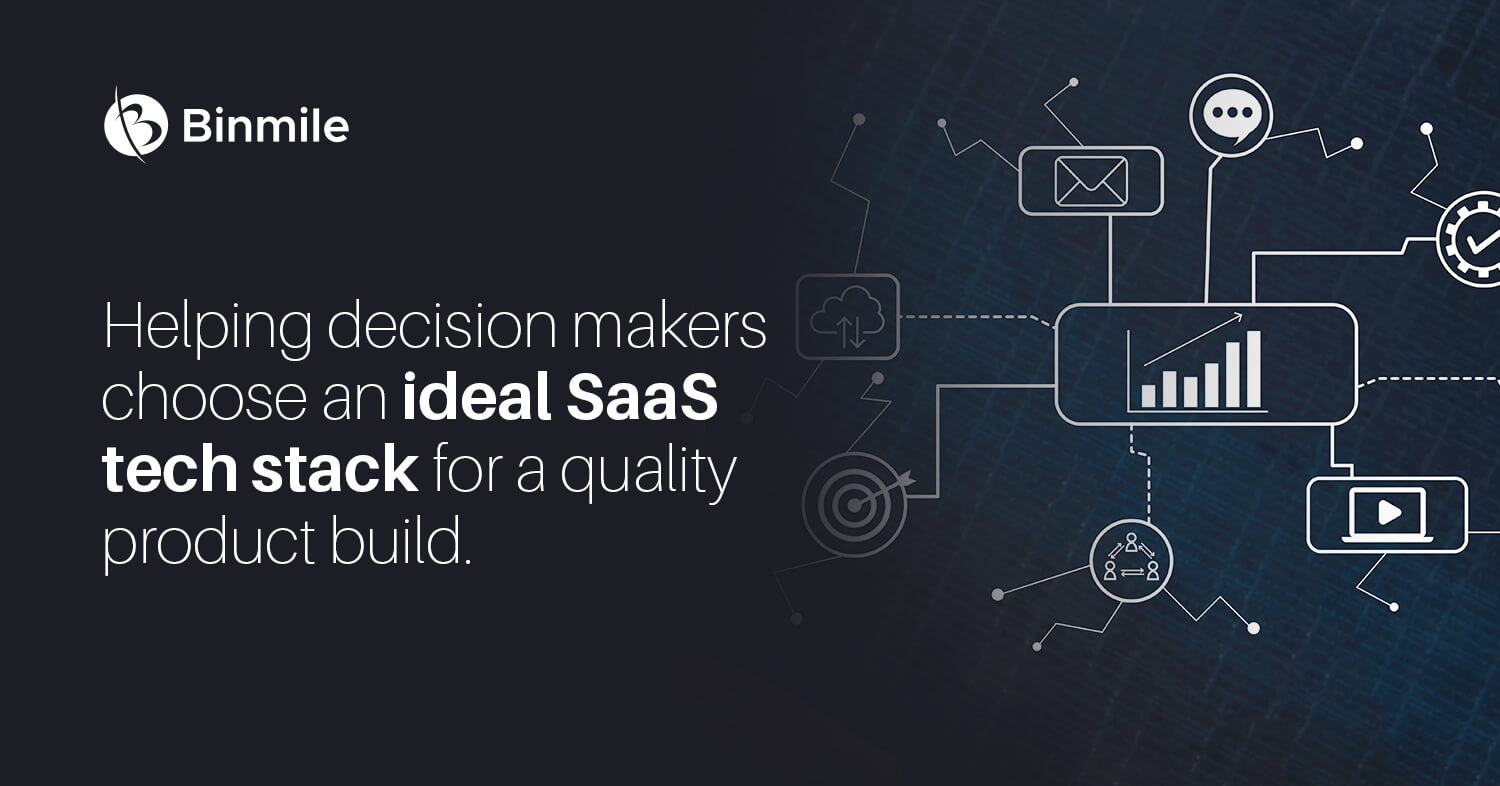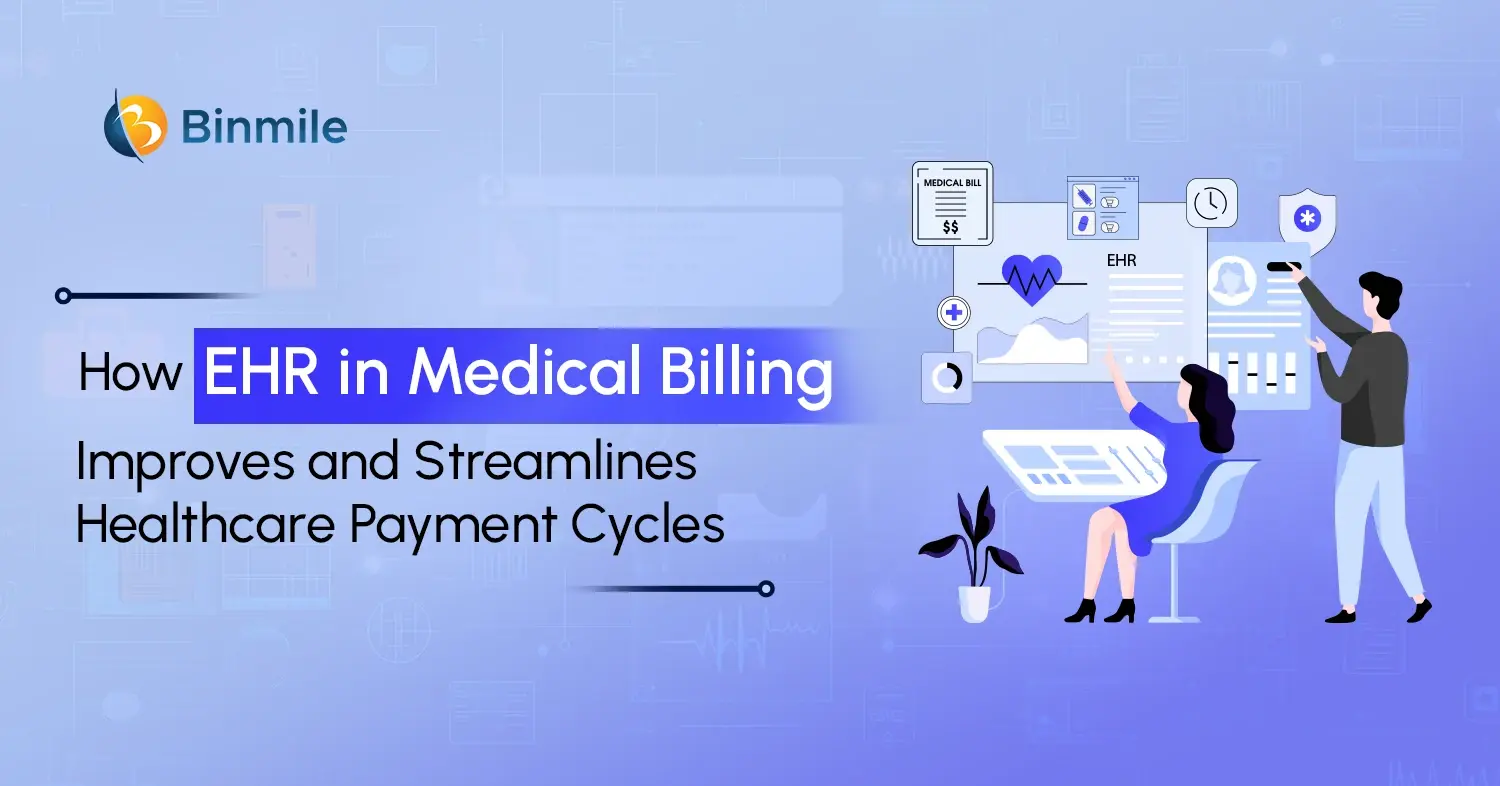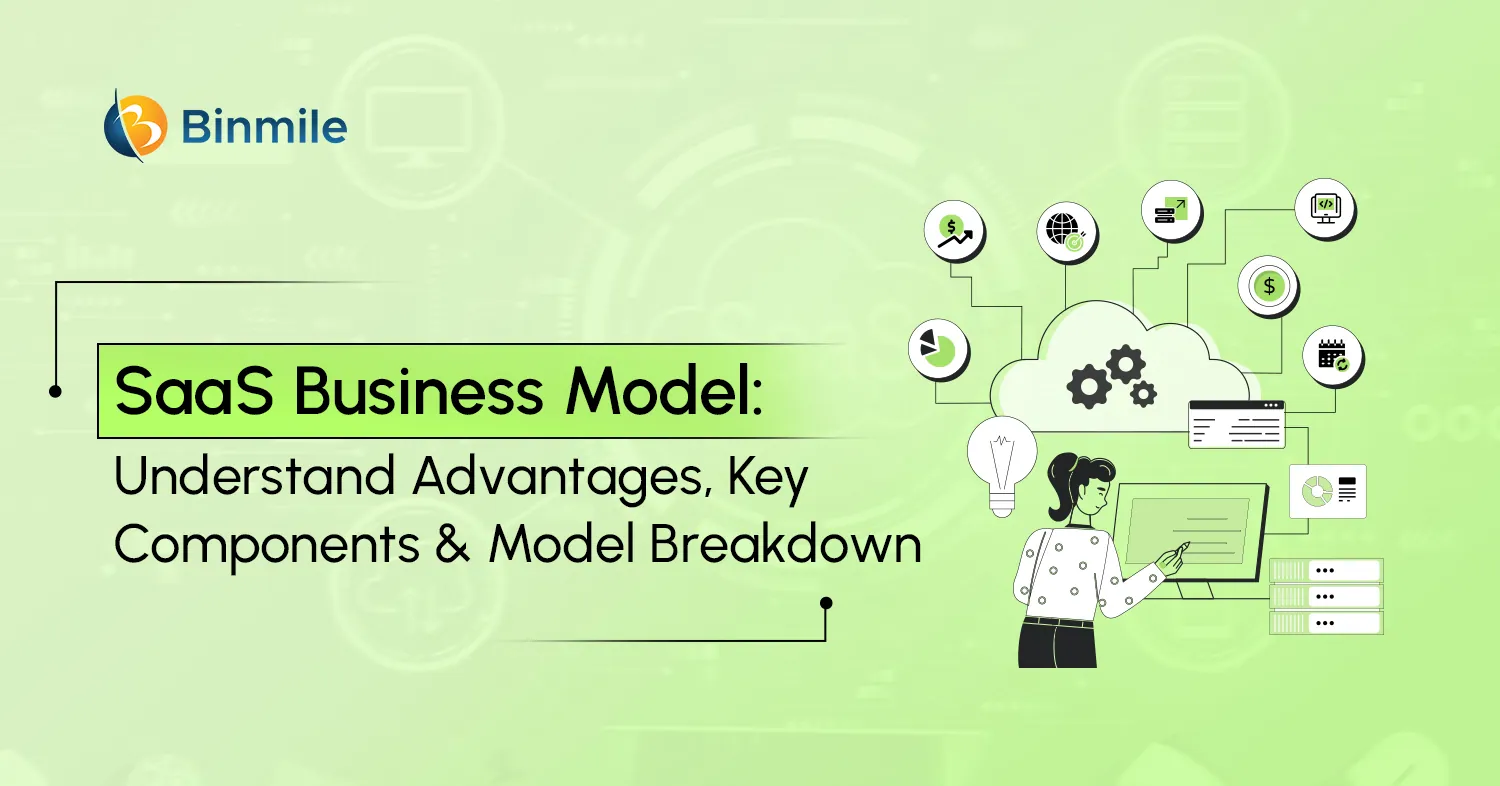In an era of the connected world, an app has its ubiquitous presence. It runs virtually everything today; from Google Docs to Netflix, Zoom, Spotify, Hubspot and so many more! The catch is, these apps are top-notch products based on Software as a service (or SaaS). Take the example of Uber. The ride-hailing giant perfectly exemplifies the connotation of employing intuitive SaaS-based app solutions. Its maiden foray into SaaS partnership started in 2020 to handle ride requests coming up in huge chunks and maintain a high-occupancy vehicle fleet.
The company also came up with a universal system resulting in a Base Web design system, a React component library to create web apps quickly and easily. That’s the importance of SaaS, inspiring companies to leverage its potential to streamline their development processes for a successful product build.
What is a SaaS Tech Stack? What is it used for?
A SaaS tech stack consists of different technologies or a set of frameworks, programming languages, development tools, libraries, and infrastructure. The purpose is to speed up the software development process into creating and launching a fully-functional app.
The tech stack is very important. The mere omission of it makes entire development teams useless. Any software that you plan to design is based on the solid foundation of a tech stack that defines and directly impacts the overall development process in terms of time and money.
Since we are talking about SaaS tech stack, let’s get to the bottom of SaaS architecture as well.
Defining SaaS Architecture and Types of SaaS-Implemented Architectures
SaaS architecture is a model for software delivery. It involves a vendor or a company or a service provider, who hosts an application over a remote or Cloud server. The purpose is to enable end-users to access the app over the internet, with the help of web browsers. Deploying SaaS architecture affords benefits, too.
For starters, your vendor will take care of all backend infrastructure, relieving you of the hassle of timely maintenance. Forget about data loss, as it is stored on remote data servers. Meaning, the automatic data backups in your SaaS architecture prove helpful in the event of hardware failure in your local data center.
Another benefit is the delivery of seamless services, thanks to fully tested versions of the latest cloud-native technologies by your vendor. It relieves you from encountering bugs, random errors, or complex deployment procedures.
Types of Architectures for SaaS Development
- Single-Tenancy Architecture: A customer or a tenant is limited to their own independent database and instance of the software. As a result, they can’t share data with the option of single-tenant architecture.
- Multi-Tenant Architecture: This model or ecosystem allows the support of multiple servers using a single instance. Here, users’ data is logically isolated to enhance visibility, in the end. It is the most recommendable option for building SaaS applications, thanks to its benefits, such as code reusability, seamless upgrades, cost-saving, etc.
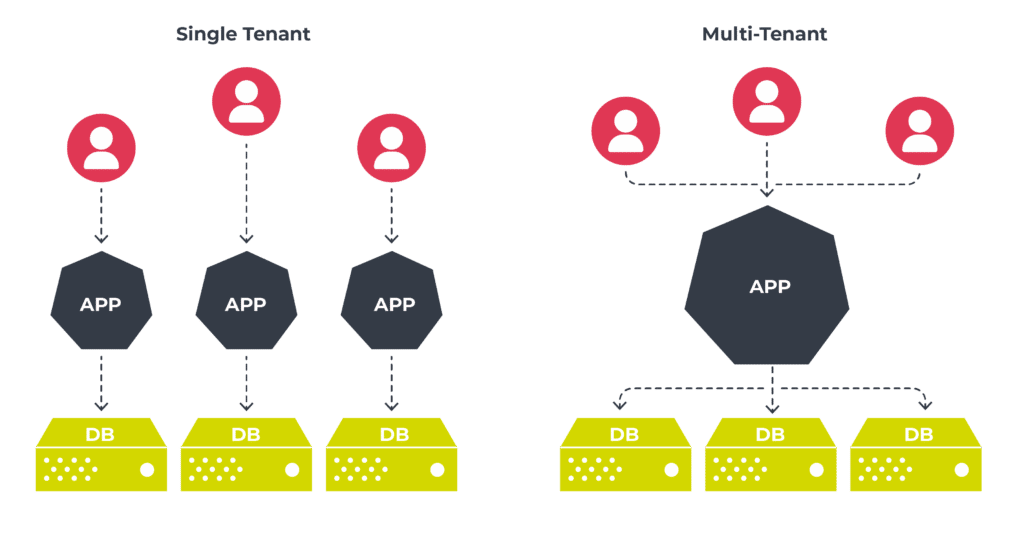
Key Components of a Perfect SaaS Tech Stack
The tech stack for SaaS organizations is divided into two distinct parts. They are front-end and back-end. Here’s a brief rundown of each component of a SaaS tech stack.
1. Front-End Stack for SaaS
It takes care of a coding part of an app. Basically; it deals with how users interact with your app. Therefore, its value is very significant to ensure a convenient user experience, an easy-to-navigate user interface, and clear internal structures.
Here is a rundown on key front-end technologies –
- HTML: As a mainstay component for virtually every web project, HTML helps developers structure the entire web page content. Moreover, it also specifies the type of information to be displayed to the users visiting a web page.
- CSS: Developers use CSS (Cascading Style Sheets) to style the written document or HTML page in a more polished way for users to view the content easily. Its potential is not limited to just styling the web page content. Rather, it also brings forth responsiveness to a web page or an application.
- JavaScript: JavaScript allows developers to make a webpage more interactive, attractive, and interesting for user engagement by creating sitemaps, pop-ups, contact forms, and other elements. It also allows developers to update a webpage dynamically, conforming to the user’s action.
Also Read: Best Front-End Frameworks for Web Development
2. Back End Stack for SaaS
The back end is the core part of tech stack development that drives your website or mobile app. Essentially, it ensures logic integration into your app or site. The back-end structure consists of key components, such as a database, framework, server, and operating system. Here, the web server accepts a browser-generated request and processes it based on the coded logic. It then reverts the processed request to the designated content data.
- Programming Languages: Popular programming languages that streamline back-end web development include Python, PHP, C++, etc. Each has its unique purpose. For example, Python, as a general-purpose programing language, features a simple syntax and coding process. It expedites the development process for website or software builds. PHP, as a scripting language, is an ideal recommendation for empowering the back end of a website. It is popular for SaaS startups. Lastly, the use of C++ facilitates the creation of high-performing apps. It can also integrate all the components of C language with extra features for video games and large web apps.
- Database: A database is fundamentally an organized and systematic collection of structured information, like records, data, and files typically stored electronically in a computer system. Examples of famous databases include MongoDB, MySQL, and PostgreSQL. It also includes relational (SQL) and non-relational (NoSQL) data structures.
- DevOps Tools: DevOps tools, such as Jenkins, Docker, Kubernetes, Grafana, Ansible, ELK stack, etc. are used for back-end development. Developers use these tools to automate and manage tasks and complex environments at scale. They also facilitate continuous integration and delivery pipelines based on DevOps methodology.
- Server/hosting: A key aspect of a technology stack, server hosting is a reliable infrastructure delivery model. It provides remote access to server resources. It consists of a CPU, memory, disk, etc. to store data and power apps. Back-end developers rely on a variety of servers, including Google Cloud, AWS, Nginx, Apache, DigitalOcean, etc.
- APIs: An Application Programming Interface or API is basically a bridge between a client and a server. It consists of various repetitive steps pertaining to the software development processes. APIs are designed to enable servers to pull the key data and transfer or share it to the designated database. Interconnected between a server and a client, APIs can influence multiple services. Therefore, failure of any would result in glitches in other functions.
Also Read: Best Frameworks for SaaS Product Development
Examples of Top Companies that Uses SaaS Tech Stack
An Example of Quora Tech Stack –
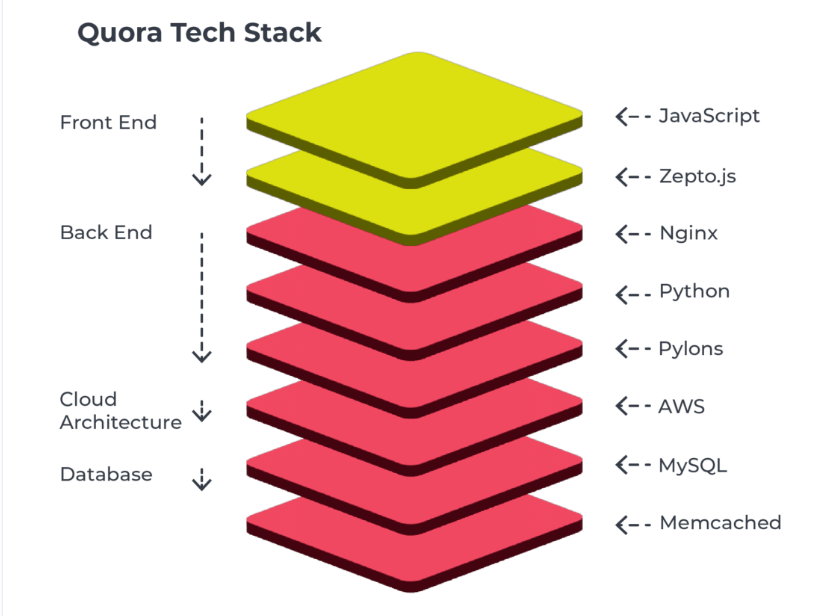
An example of tech stacks in top companies
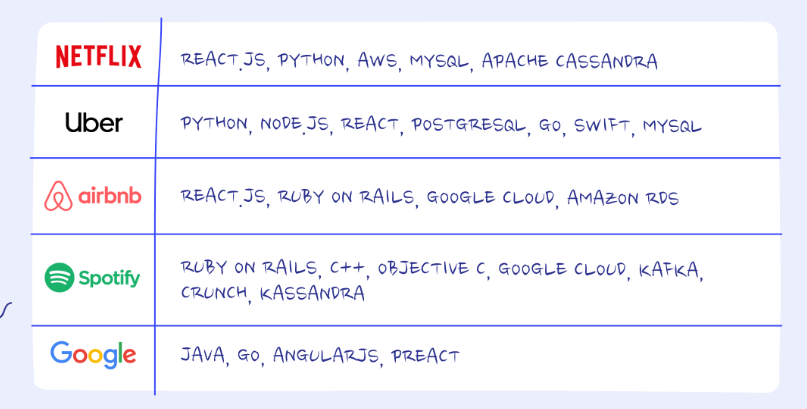
Steps to Consider When Choosing the Right SaaS Tech Stack
The value of an ideal SaaS tech stack is that it endorses its significance of creating a secure product that can also be maintained easily. Therefore, the selection of the right tech stack will further determine the quality of your SaaS-based product’s functionality, scalability, and user experience. Obviously, it puts emphasis on why choosing the right SaaS tech stack could deliver quantifiable benefits to your project, apart from helping you save costs, time, and money on your SaaS development project.
Here is the description of some insightful strategies you can adopt to select the right SaaS tech stack that would help you manage your next SaaS projects cost-effectively.
1. Perceive the SaaS Model Beyond Just a Tech Strategy
SaaS is replacing the traditional business approach by offering an on-demand development service model to help companies with legacy infrastructure to digitize their business operations. The SaaS business model is accessible to anyone from any location around the world. Therefore, SaaS service providers can offer different types of resources to clients in terms of servers, storage, and networks according to their product preferences.
In addition, the SaaS model allows companies to involve the cloud infrastructure layer consisting of security policies to ensure that user permissions, access, and identities are managed effectively. The bottom line is, SaaS is not to be treated as a tech strategy. The way it is helping companies to bring forth digital transformation in their services underscores its viability and significance to a greater degree.
2. Prioritize a Seamless Client Onboarding Experience
According to Gartner, 20% of customers of an existing company will generate 80% of its future revenue. Meaning, companies can’t underestimate the underlying value of client onboarding, a critical step to creating a great first impression. So, when it comes to choosing the right SaaS tech stack, you must ensure that your client onboarding process is faster, easy to understand, and seamless. Otherwise, it would result in numerous customers not being happy with your SaaS development services, irrespective of how advanced and good the products are.
The clincher is – don’t think your SaaS solutions are worth your customers’ attention if you don’t make them feel related to the same by streamlining your SaaS onboarding process.
3. Considering going for an MVP Design Approach
A minimum viable product or MVP could result in a viable roadmap for a successful SaaS solution. How come? Because, if the initial impression of your target customers with an MVP’s limited features is great or bad, it would pave the path for understanding what your prospective customers require. You will utilize the customer feedback on reengineering your product for a solution best suited to the expectations of your target customers. Based on the initial experience with your MVP, you will have a brand-new perspective on how to succeed in your SaaS solutions.
DON’T MISS THIS: Cost of Building SaaS Platform
Other Considerations:
- Never deviate from the actual requirements of your project. Choosing the tech stack while keeping in mind your project’s needs will help you create a productive app.
- A tech stack should perfectly be aligned with your company’s vision. For example, while a CMS will be good enough for small projects, the bigger ones require deeper tools. For complex ones, development teams will employ a combination of relevant programming languages.
- To ensure that the product is secure, make sure you are aware of the pros and the cons of the tech stack.
Read More: SaaS App Development Guide
Final Words
A tech stack can be a game changer in succeeding your mobile or web application. It plays an instrumental role in streamlining your overall development process unless you happen to choose the right one. Choosing the right SaaS tech stack would enable you to leverage its features, including frameworks, libraries, and programming languages for a quality product build. Therefore, our guide will help you explore the best SaaS stacks used by top companies and how to choose the right one to spearhead your overall development process efficiently.
Remember that the tech stack you choose will have an impact on your app’s features and overall performance. Therefore, if you find it difficult to choose an ideal tech stack and need assistance, look for a qualified software development company. We strongly recommended to choose the right company that will help you walk through the ranges of tech stacks for a successful product build.
